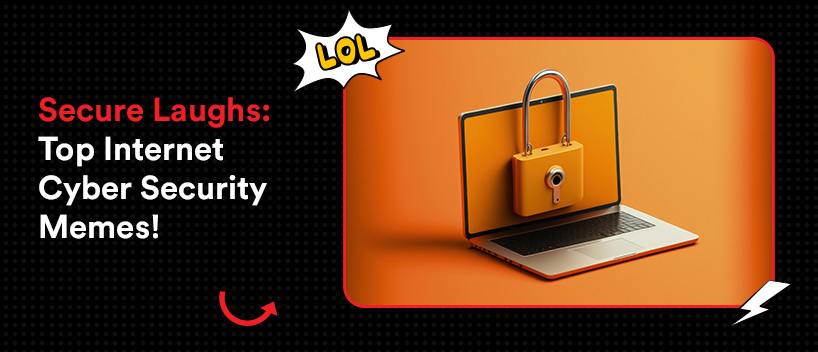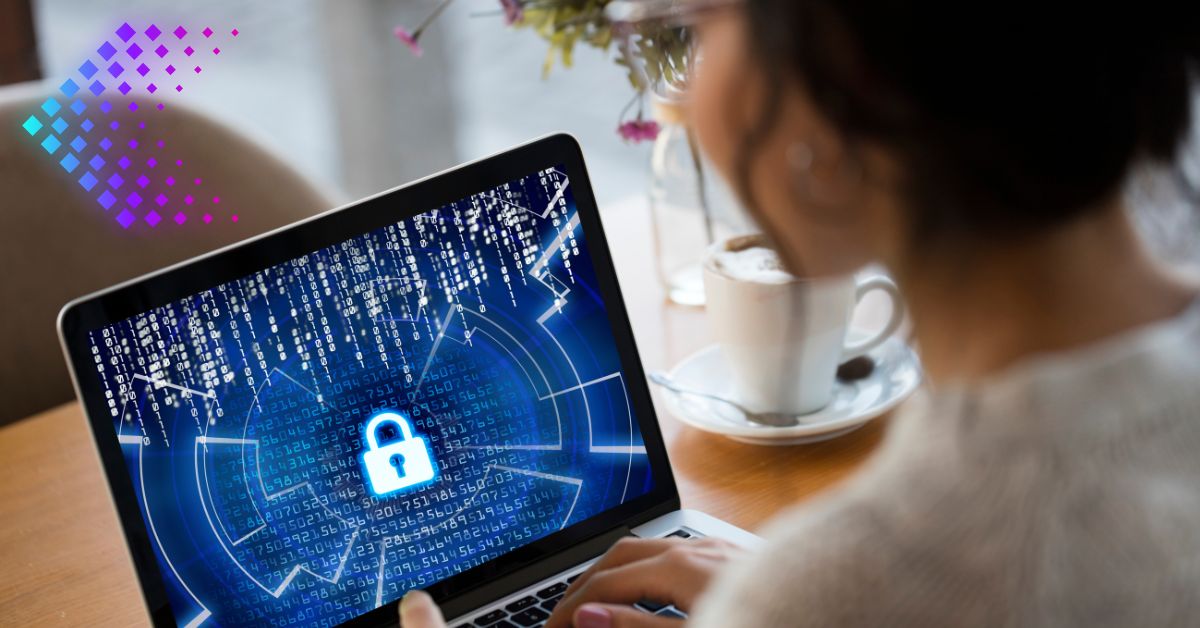Now Reading: Cybersecurity Memes: How Humor Helps Us Cope with Digital Dangers
-
01
Cybersecurity Memes: How Humor Helps Us Cope with Digital Dangers
Cybersecurity Memes: How Humor Helps Us Cope with Digital Dangers

In the often serious and complex world of digital security, a surprising hero has emerged: humor. It might seem strange, but cybersecurity memes have become a popular way for IT professionals and everyday users to connect, share experiences, and even learn. They turn the stress of password policies, phishing scams, and software updates into a shared laugh. These funny images and captions provide a much-needed break from the high-stakes reality of protecting our digital lives. They prove that even in a field defined by firewalls and encryption, there is plenty of room for a good joke.
This article will explore the funny and fascinating world of cybersecurity memes. We’ll look at why they are so popular, how they help professionals deal with stress, and what they can teach us about staying safe online. From relatable office humor to sharp commentary on the latest security threats, these memes are more than just a laugh—they are a cultural phenomenon within the tech community.
Key Takeaways
- Cybersecurity memes offer a humorous outlet for the stress and complexity of the IT security field.
- They act as a common language, helping to build community and camaraderie among professionals.
- Memes can be an effective, informal tool for raising awareness about common security issues like weak passwords and phishing.
- The humor in these memes often comes from shared experiences, frustrations, and the absurdity of certain security practices.
- By making cybersecurity more relatable, memes can help bridge the gap between technical experts and everyday users.
The Psychology Behind Laughing at Digital Threats
Why do we find humor in things that are meant to be scary, like data breaches and hackers? The answer lies in how our brains process stress and anxiety. When faced with a constant stream of potential digital dangers, humor acts as a powerful coping mechanism. It allows us to distance ourselves from the threat emotionally, making it feel less intimidating. Sharing cybersecurity memes creates a sense of “we’re all in this together,” which reduces feelings of isolation and helplessness that can come with managing digital security.
Laughter has been shown to reduce stress hormones and release endorphins, which are natural mood lifters. For an IT professional who just spent hours dealing with a server outage or a sophisticated phishing attempt, a meme that perfectly captures their frustration is a form of relief. It validates their experience and turns a negative situation into a moment of shared amusement. This psychological break is crucial for preventing burnout in a high-pressure industry. The humor found in cybersecurity memes isn’t about ignoring the risks; it’s about managing the human response to them in a healthy and constructive way.
Common Themes in Cybersecurity Memes
If you scroll through a collection of cybersecurity memes, you’ll quickly notice a few recurring themes. These topics resonate so strongly because they reflect the universal experiences of anyone who works with technology. They are the inside jokes of the digital world, understood by IT veterans and office workers alike.
The Endless Struggle with Passwords
Password-related humor is a cornerstone of cybersecurity memes. Memes often poke fun at overly complex password requirements (“must contain an uppercase letter, a number, a hieroglyph, and the blood of a unicorn”) or the frustration of users who constantly forget their credentials. You’ll see images of exasperated characters from movies and TV shows paired with captions about being locked out of an account for the tenth time. This theme is so popular because it’s a shared pain point. Everyone has struggled with creating a password that is both secure and memorable, and these memes provide a perfect way to laugh about the absurdity of it all.
“Have You Tried Turning It Off and On Again?”
The classic IT support line, “Have you tried turning it off and on again?”, is another goldmine for meme creators. This phrase has become shorthand for the simple, often surprisingly effective, solutions to complex tech problems. Memes on this topic usually feature a smug-looking IT person or a frustrated user. They highlight the communication gap that can sometimes exist between tech support and those they are trying to help. These cybersecurity memes celebrate the simple fix while also gently mocking the reliance on it. It’s a joke that works on multiple levels, appealing to both the IT pro who says it and the user who is tired of hearing it.
The User as the Biggest Vulnerability
A recurring and slightly cynical theme in the world of cybersecurity memes is the idea that the user is the weakest link in the security chain. This is often represented by memes showing a user clicking on a suspicious link despite numerous warnings, or someone writing their password on a sticky note and attaching it to their monitor. While these memes can seem a bit harsh, they stem from a place of real-world experience for security professionals. They humorously illustrate the concept of social engineering, where attackers exploit human psychology rather than technical flaws. These memes serve as a funny, if not-so-subtle, reminder that security awareness and training are just as important as any firewall.
How Memes Build Community Among IT Professionals
In any specialized field, a shared sense of humor is a powerful tool for building community. For cybersecurity experts, who often work in high-stress environments, cybersecurity memes serve as a digital water cooler. They are a way to share common frustrations, celebrate small victories, and bond over experiences that people outside the industry might not understand. When a security analyst shares a meme about a zero-day exploit, they are doing more than just trying to be funny; they are reaching out to their peers and saying, “Do you get this too?”
This shared language helps to break down professional hierarchies and create a more collaborative atmosphere. A junior analyst and a senior security architect can both laugh at the same meme about a poorly configured firewall. This camaraderie is vital in a field where teamwork and rapid communication are essential for responding to threats. Online forums, social media groups, and private chat channels dedicated to cybersecurity memes have become important spaces for networking and mutual support, proving that laughter is a serious component of professional identity.
Are Cybersecurity Memes an Effective Educational Tool?

While they are primarily for entertainment, cybersecurity memes can also have an unexpected educational benefit. Traditional security awareness training can sometimes be dry and forgettable. A well-crafted meme, however, can deliver a security lesson in a format that is engaging and easy to remember. For instance, a funny meme about the dangers of using public Wi-Fi can stick in someone’s mind more effectively than a paragraph in a corporate security manual.
Spreading Awareness Through Humor
Memes excel at simplifying complex ideas. A single image can convey the core concept of phishing—an email that looks legitimate but is actually a trap—more quickly than a lengthy explanation. When people share these memes, they are inadvertently spreading security awareness. This informal, peer-to-peer method of education can be particularly effective at reaching audiences who might tune out more formal training. The humor makes the topic of cybersecurity less intimidating and more approachable for the average person, encouraging them to think more critically about their own digital habits.
Limitations of Memes in Security Education
Of course, we shouldn’t replace all security training with cybersecurity memes. Memes are great for introducing a concept or reinforcing a simple message, but they lack the depth needed for comprehensive education. They can’t explain the technical nuances of multi-factor authentication or the legal requirements of data protection regulations. There is also a risk that they might oversimplify an issue or trivialize a serious threat. Therefore, memes should be seen as a supplement to, not a replacement for, structured security education programs. They are the hook that gets people interested, not the entire textbook.
The Most Iconic Cybersecurity Memes Explained
Certain memes have achieved legendary status within the cybersecurity community. They are referenced repeatedly and have become part of the culture. Understanding these iconic memes is like learning the secret handshake of the IT world.
|
Meme Format |
Description & Meaning |
|---|---|
|
This is Fine Dog |
A dog sits in a room engulfed in flames, saying “This is fine.” It’s used to represent denial or nonchalance in the face of a massive crisis, like ignoring server alerts during a data breach. |
|
Distracted Boyfriend |
A man walking with his girlfriend is looking back at another woman. In cybersecurity, this is used to show a developer being tempted by a new, insecure feature while ignoring stable, secure code. |
|
Drake Hotline Bling |
Drake is shown rejecting one thing and approving another. It’s often used to contrast bad security practices (like ‘password123’) with good ones (like using a password manager). |
|
Hide the Pain Harold |
A man with a pained smile. This meme perfectly captures the feeling of an IT professional trying to remain calm while explaining to a user why they shouldn’t have downloaded a suspicious file. |
These memes are constantly being adapted to fit new situations, but their core message of irony and shared struggle remains the same. They are a testament to how creative the community is at turning its daily challenges into relatable art.
The Future of Humor in a Serious Industry
As technology continues to evolve, so will the humor that surrounds it. We can expect to see new cybersecurity memes emerge that poke fun at artificial intelligence, the Internet of Things (IoT), and whatever new digital frontier we cross. The fundamental role of these memes, however, is likely to stay the same. They will continue to be a coping mechanism, a community-building tool, and an informal way to spread awareness.
The increasing integration of technology into every aspect of our lives means that cybersecurity is no longer a niche topic. As more people become familiar with concepts like phishing and data privacy, the audience for these memes will grow. This could lead to a new wave of humor that bridges the gap between experts and the general public even more effectively. As a leading source for business and technology insights, even publications like those found at https://forbesplanet.co.uk/ may one day analyze the economic impact of security-related humor. The one thing we can be sure of is that as long as there are software bugs, forgotten passwords, and curious users, there will be cybersecurity memes to help us laugh about it.
Conclusion
From the frustration of password resets to the existential dread of a data breach, cybersecurity memes have found a way to inject humor into one of the most serious fields of the modern era. They are more than just silly pictures on the internet; they are a cultural language that builds community, relieves stress, and even educates. These memes transform shared struggles into shared laughter, making the daunting task of digital defense feel a little more human. By allowing us to find amusement in the face of digital threats, they provide a valuable service, proving that sometimes the best defense is a good sense of humor.
Frequently Asked Questions (FAQ)
Q1: Where can I find the best cybersecurity memes?
You can find cybersecurity memes on social media platforms like Reddit (in subreddits like r/iiiiiiitttttttttttt and r/ProgrammerHumor), Twitter, and LinkedIn. There are also many websites and blogs dedicated to IT and tech humor that regularly feature them.
Q2: Are cybersecurity memes only for IT professionals?
Not at all! While some memes contain technical jokes that are best understood by professionals, many are based on universal experiences like forgetting passwords or dealing with software updates. Anyone who uses a computer can likely find a cybersecurity meme they relate to.
Q3: Can sharing a meme about a security flaw be a risk?
Generally, sharing a meme about a type of security flaw (like weak passwords) is harmless and can even raise awareness. However, sharing specific details about a known, unpatched vulnerability in your own organization’s systems could be a security risk. It’s always best to be mindful of what information you are sharing publicly.
Q4: How do cybersecurity memes help with burnout?
Burnout is common in high-stress jobs like cybersecurity. Memes provide a quick and easy way to de-stress through laughter. They validate the shared frustrations of the job and foster a sense of community, reminding professionals that they are not alone in their challenges. This can help reduce feelings of isolation and stress.
Q5: What makes a cybersecurity meme successful?
A successful cybersecurity meme is relatable, timely, and simple. It captures a common experience or emotion in a clever way. The best memes often use popular, recognizable formats but apply them to a specific cybersecurity context, creating an inside joke that a wide audience can still appreciate.

















